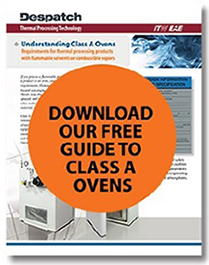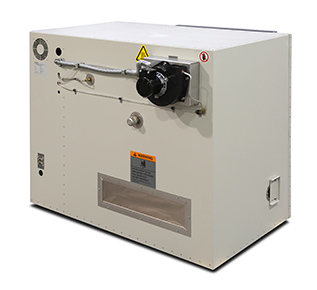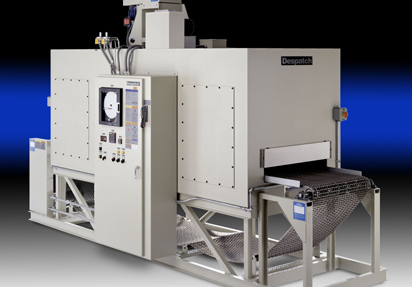
If you process a flammable product or remove combustible vapors from a
product in an industrial oven, you will need a Class A oven that meets
NFPA 86 requirements. Flammable volatiles that pose a potential
explosion or fire hazard can originate from paints, powders, inks, and
adhesives. Potential threats may also originate from finishing
processes, such as dipped, coated, sprayed, and impregnated materials as
well as from polymerization or other molecular rearrangements.
Combustible materials include substrate material, wood, paper, plastic
pallets, spacers and packaging materials.
Inadequate training of operators, lack of proper maintenance, and
improper application of equipment can cause serious injury. For the
latest safeguards required to minimize explosion hazards, get a copy of
NFPA 86 Standard for Ovens and Furnaces, 2019 Edition, from the National
Fire Protection Association (www.nfpa.org).
If you have multiple ovens and any one of them is used for processing
combustible products, it is recommended that all be Class A. This will
prevent someone accidentally using the wrong oven which could result in
a catastrophic incident.
Many of the NFPA guidelines and specifications are temperature dependent
due to the rate of evolution so it is important that a Class A rated
oven never be loaded hot.
Despatch incorporates all pertinent NFPA required safety testing,
visual inspection and required documentation in all Preventative
Maintenance and Calibration Service Agreements.
NFPA 86 has requirements for annual inspection, operational testing,
documentation of testing, and visual inspection of certain oven
components such as:
- Safety interlocks
- Set point of temperature, pressure, and flow devices used as safety
interlocks.
- Pressure and explosion relief panels.
- Gas heater components.
Contact your Despatch Sales Representative for more information.
Despatch recommends the use of an airflow switch with the forced exhaust
to prove airflow.The forced exhaust is sized to keep the flammable
solvent vapor concentrations below the lower explosive limit (LEL) in
the oven chamber. The purge timer operates in conjunction with the
forced exhaust to purge the oven of volatiles before the heaters are
allowed to energize.The purge time is based upon the volume of the oven,
as the oven air must be changed four times before the heater may be
energized. The airflow switch is used to prove exhaust airflow. With no
airflow, the heating system shuts down via the airflow switch. The
explosion relief area is typically incorporated into the oven by means
of an explosion relief panel/door or explosion relief membrane.

Like all Despatch Class A ovens, the RFD1-42 Class A Benchtop oven
features a pressure relief panel, purge timer and exhaust fan.












